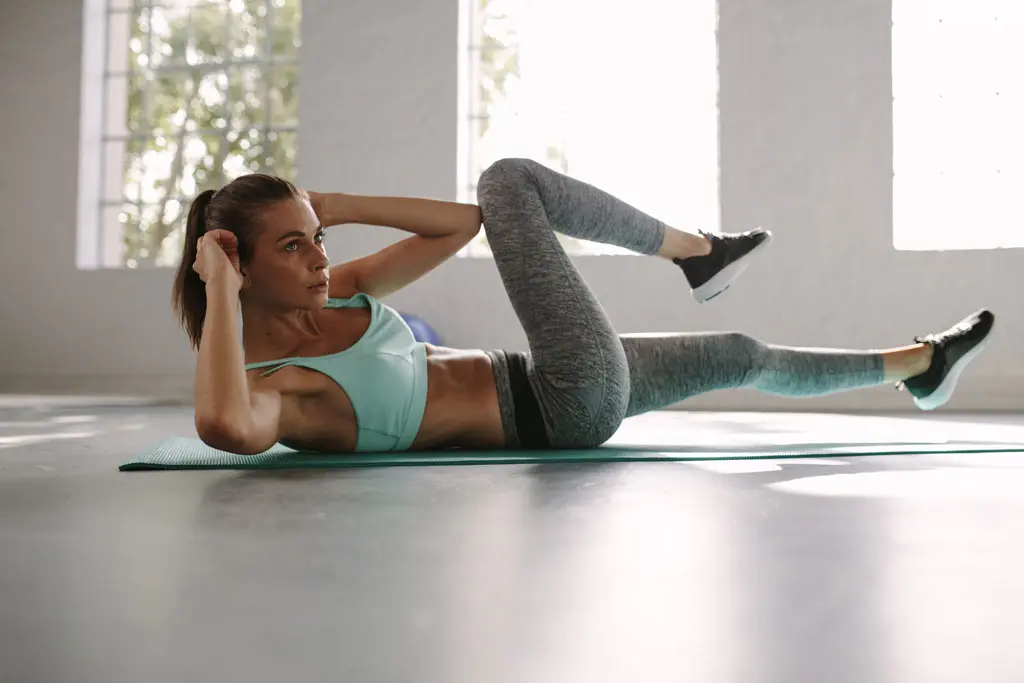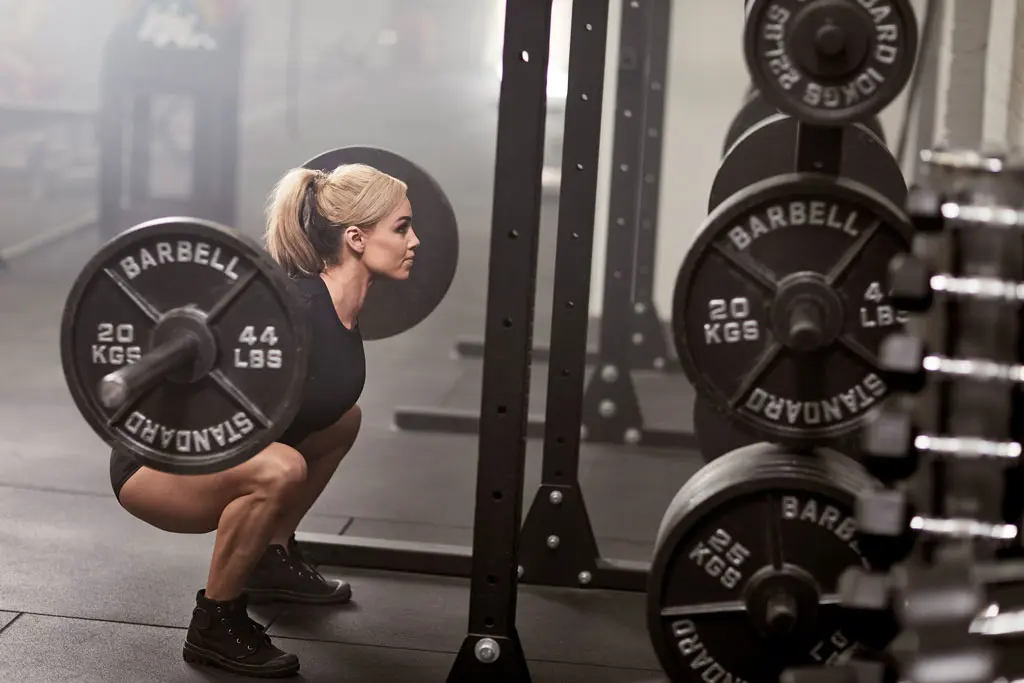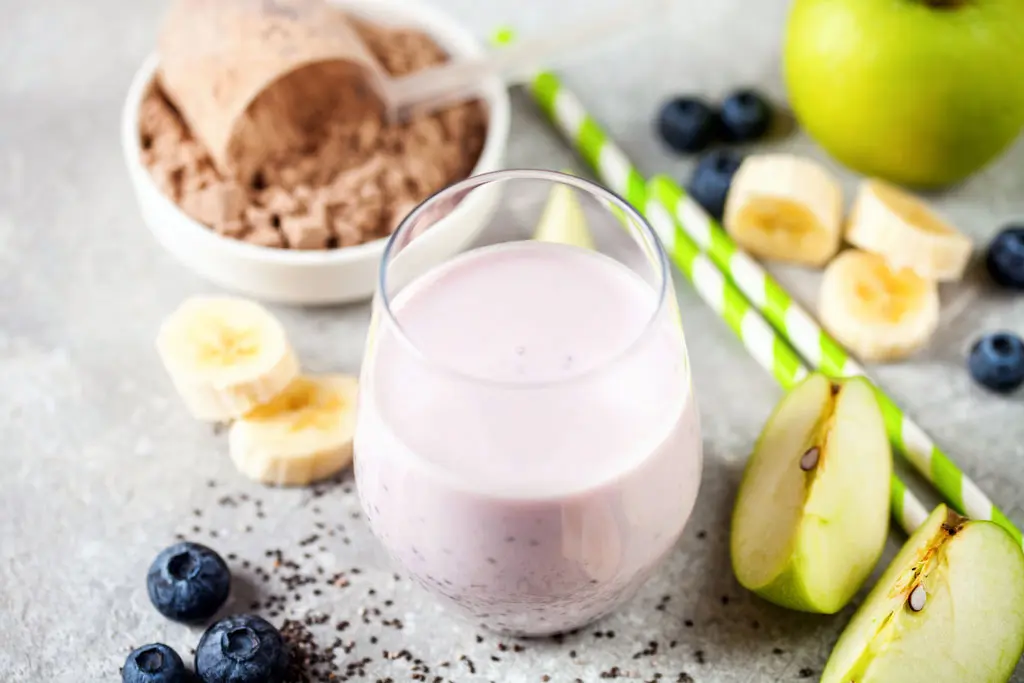Health & Fitness Myths Busted: Sorting Fact From Fiction

December 13, 2019

If you’re currently on your health and fitness journey, you’re bound to have come across a few fitness myths — whether brought up by friends during conversation, or from researching an area you’re keen to learn more about.
With there being so many resources available about living a healthy lifestyle, it can be hard to sort the science from the spam. If you’ve done any of the SWEAT programs, you’ll know our trainers mean business, so we’ve pulled together some common fitness myths to help set the record straight!
Common health and fitness myths
You’ve all heard them at least once, or read them on your feed — these are the myths that crop up over and over again.
Stick to cardio if you want to slim down
This one comes up a lot. Cardio is great for increasing fitness and burning calories, with some even choosing to do fasted cardio because of its benefits. However, using a combination of different training styles can promote better results.
Low intensity cardio
Low-intensity cardio helps to build aerobic capacity, allowing your body to break down fats and carbs into energy and distribute oxygen around the body to the working muscles. It’s great for cardiovascular health and uses slow-twitch muscle fibres which are needed for long endurance exercise like marathon training. Some examples of low-intensity exercise include swimming, jogging and cycling.
High intensity cardio
High-intensity cardio involves fast, calorie-burning exercises like sprints or skipping and works by producing an afterburn effect as a result of getting your heart rate right up. This is known as Excess Post-exercise Oxygen Consumption (EPOC) and means you continue to experience the benefits — even after you’ve finished your workout!
If you only do cardio, you might be missing out on the benefits from other styles of training. A well-rounded fitness program includes resistance training and cardio, which is why you’ll find each of the SWEAT Trainers include both types of exercise in their programs.
Strength training
Strength training has many advantages, including helping to increase strength and bone density, and can minimise your risk of developing osteoporosis. It is also a great way to build lean muscle. Having lean muscle means you will burn more energy at rest, resulting in a heightened metabolic rate.
Not only will combining different training styles provide you with variety, but can also help you to avoid a fitness plateau and maximise your progress. While there are so many indicators that you are progressing on your health and fitness journey, a good way to keep track of your progress is by measuring your heart rate.
Your resting heart rate can indicate how physically fit you are. Tracking your heart rate during exercise can help you to modify the intensity in order to achieve a specific goal.

No food after 7pm if you’re trying to stay healthy
For those who work late nights or crave something sweet after dinner, cutting out food after 7pm might sound almost impossible. While there is some stigma around eating after a certain time, the time you eat doesn’t matter as much as what you are eating.
Intermittent fasting is a popular recent trend that involves fasting usually between 16 and 24 hours. For example, you could eat as you would between 11am-7pm and fast for the rest of the day, or you may be following an OMAD diet. The idea is that it may reduce your total calorie intake as it often leads to eating less than you normally would.
Intermittent fasting can also help to lower insulin levels so that stored fat can be broken down and used as energy. While it may work for some people and their lifestyles, using this approach does not mean that you should eat whatever you like during this “eating window”. It is more important to consider the quantity and quality of the food you are eating, rather than the time you choose to eat.
When embarking on a new healthy eating journey, take the time to understand what you should be eating and how it can help you to achieve your goals. A balanced diet that includes fresh, wholesome foods is a great place to start.
The meal plan in the SWEAT app is based around the Australian Guide To Healthy Eating and provides five meals throughout the day that include foods from each of the main food groups. The meals can be distributed across the day to best fit in with your lifestyle — it doesn’t matter when you have them!
To establish healthy eating habits, try to find a routine that’s realistic for your lifestyle. If your body knows when it’s likely to receive its energy, then digestion, metabolism and appetite will all work well together, meaning you will feel better and can train harder, which leads to better results.
It’s also important to listen to your body’s internal hunger cues and eat when you’re feeling hungry. Eating mindfully can also help you to pay more attention to the foods you eat and how they make you feel.
There are a number of different approaches that can be taken towards nutrition and healthy eating — it’s just about finding the one that works best for you.

You can spot reduce
If you have been doing endless tricep dips with the hope of defining your arms, then don’t be alarmed when this doesn’t happen quite the way you plan.
Think of weight loss like a bucket of water. If you scoop out one cup, the whole water level will go down, not just the area from which you scooped. In short, you can’t lose fat from just one area of your body.
Focus on combining different training styles like cardio and resistance and support this with healthy eating and hydration to progress towards your fitness goals. Using a combination of different training styles like high-intensity cardio, low-intensity cardio and resistance can also help your body better metabolise fat.
You can track your progress by taking regular progress photos — you’ll find a progress section in the SWEAT app, where you can store and compare them each week.
Exercise myths
There are some contradicting opinions about the right way to do an exercise and the benefits of doing it. Find out how they really work below.
Sit-ups will get me a six-pack
The saying “abs are made in the kitchen” is not a myth. To put it simply, the way to get defined abs is by decreasing body fat and building muscle so they appear more visible.
Doing exercises that engage the whole core can help to build strength in this area. Sit-ups target the upper abdominals, which is why you should consider a range of exercises if you’re looking for more defined abs.
Not all core exercises need to be done lying on your back. Some of the best core workouts come from lifting weights and gymnastic movements. For example, back squats, deadlifts, front-rack barbell squats and strict pull-ups all require you to switch on your core.
While many do core workouts thinking they are targeting the rectus abdominis — or what we refer to as our “‘abs’” — there are actually many more muscles that make up our core. These include the transverse abdominis (the deeper muscle that wraps around your spine and your sides), obliques (muscles on the sides of your abdomen) and erector spinae (muscles located at your lower back.).
For specific workouts to build core strength, get inspiration from the “Targeted Areas” section in the SWEAT app.

Don’t squat below 90 degrees
When it comes to squatting, there is a lot of debate about how low you should go. Some say you should only bend your knees to a 90-degree angle because any lower can put too much pressure on your joints.
If you have knee issues, you might need to stay above 90 degrees. If you’re looking at getting gains from lifting, limiting yourself to shallow squats may make it difficult to achieve your lifting goals.
The main benefit of squatting below 90 degrees is that it activates the larger muscles such as your glutes and hamstrings, which can protect your back and build more muscle. This can make heavy lifting safer in the long run.
A full squat should see your hips go below parallel. Aim to go as close as is comfortable to the ground and engage your core muscles to maintain proper form.
Squatting below parallel with correct form can take pressure off your back, which carries a lot of the load when in a 90-degree angle. However, it can add some pressure to your knees.
Find out what works for you and always listen to your body. If you experience any pain or discomfort that does not go away, seek immediate advice from your health professional.
Diet myths
Eating after dinner won’t necessarily negatively impact your results — but is it really okay to eat whatever you want if you regularly exercise?
You can out-exercise an unhealthy diet
No matter how often you work out, if your diet is not fuelling you with the right kinds of foods — you might be waiting a long time to see results, like increased muscle definition.
Eating for the way you train is so important. This doesn’t mean restricting foods, but eating what your body needs to perform. For example, if your goal is to build muscle, you might need to incorporate more foods that are high in protein.
Think of food as fuel for how you want to train. Eat healthy and nutritional foods that allow you to train the way you want. There are endless physical and mental benefits of a healthy lifestyle, when you focus on more than the number on the scales.
If you’re struggling to find the time to prepare healthy meals and find yourself often reaching for a quick and easy snack, here are some tips to help you stay healthy.

Supplements are essential
Supplements are designed to be exactly that — a supplement to a healthy diet and adequate exercise. They should never replace eating whole foods.
An example where you might find supplements like protein powder beneficial is if you’re looking to maintain or gain muscle. You may benefit from extra protein to fuel and repair your muscles if you’re lifting heavy weights. If you’re not getting enough protein through your food, or you follow a plant-based diet, you can supplement with protein shakes to help increase the levels of amino acids available to repair and build your muscle tissues.
There are other supplements like high quality green powders, BCAAs and magnesium that can be added to water or smoothies to make sure you’re getting all the nutrients you need, but if you’re eating a varied, balanced diet that includes fruits and vegetables, they may not be necessary. Speak to a health professional for advice if you’re unsure if supplements are the right choice for you.
If you start to see results over time, it won’t be from protein powder alone — it’s having the right amount of macronutrients, like protein, carbohydrate and fat in your body to achieve your desired goals.
One thing that’s not a myth — hard work will pay off!
One thing that is certain is that hard work pays off. There are no easy fixes or cheats when it comes to health and fitness. With so much information and endless opinions out there, it’s knowing what information to take on board, and what to ignore.
Writing down your goals in a journal can help to keep yourself accountable, stay on track, and find what combination of healthy eating and exercise works best for you. Celebrating small wins can also be a great motivator to keep going.
Have you heard a health or fitness myth lately? If there’s a topic you’d like to know more about, let us know in the comments!

A more empowered you starts with Sweat, and our editorial team is here to bring you the latest fitness tips, trainer recommendations, wellbeing news, nutritional advice, nourishing recipes and free workouts.
* Disclaimer: This blog post is not intended to replace the advice of a medical professional. The above information should not be used to diagnose, treat, or prevent any disease or medical condition. Please consult your doctor before making any changes to your diet, sleep methods, daily activity, or fitness routine. Sweat assumes no responsibility for any personal injury or damage sustained by any recommendations, opinions, or advice given in this article.
Wellbeing